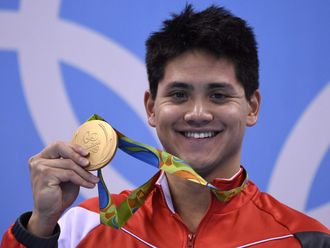
London: The evolution of golf into a more athletic sport than ever before is as noticeable as the batch of injuries which may well have arrived as a direct consequence.
Tiger Woods is expected to take his place in the field for this week’s WGC-Cadillac Championship at Doral but the world No.1 has been plagued by the back trouble which prompted his withdrawal from the Honda Classic on Sunday. Woods’ problem would be notable in isolation but it is not; a string of the world’s top players have been afflicted by fitness troubles in recent times.
Jason Day, the winner of the first WGC event of the year, has a strapping on his left wrist to protect torn ligaments. He had trouble sleeping when en route to his success at Tucson because of a sore back.
Justin Rose’s start to 2014 has been disrupted by tendinitis in his shoulder. Henrik Stenson’s achievements last year were even more praiseworthy because of wrist pain. And so it goes on; modern golfers seem more familiar with treatment rooms than was the case during previous generations.
To Rose, these ailments are unavoidable. “This is a repetitive injury sport,” says the US Open champion. “You do one thing over and over and over again and things are going to give out. I’m 33, coming up on 34 this year, and there are a lot of miles in the vehicle. I’ve been playing golf every day since I was five years old.
“I consider myself lucky I’ve never had a major injury, have never had surgery and got a good team around me to ensure that I never have surgery.
“So this is all part of the job. It’s nothing, really. It’s just something you have got to manage and get on with. All of us at some point in our careers face a little hurdle.”
Physically demanding schedule
The fact Woods is now 38 must be recognised. However, he has not been alone in citing the PGA Tour’s wraparound schedule as physically demanding; opportunities for time off come at a premium.
Jason Stodelle, an on-site physiotherapist with the PGA Tour, estimates half the field in any given week and 90 per cent of players over the course of the year will visit his treatment room. Three quarters of them require action on a specific injury. “Lower back injuries are the main one for us,” Stodelle explains. “Probably 30 per cent of the guys who come in here have lower back injuries, which is usually repetitive golf swing related. The exception is if players have hit a heavy shot from the rough, for example.
“It comes down to scheduling for a lot of the guys but if they aren’t playing well come the summer, they will be playing seven or eight tournaments in a row. By the sixth week in a row, they will start to break dowsn a bit.”
Years, not weeks, are the pertinent quantity with regards to golfers who have been playing regularly and competing from a very young age, as acknowledged by Rose. Younger, that is, than was historically the case.
“I’m very much of the mind that you should create the athlete first,” says Stodelle. “Let them play soccer, baseball, basketball as well as golf. That might mean they win less tournaments as a junior but it’s easy to work out what will happen to someone by 28 years old if they have started swinging a golf club all the time when eight.”
Gym culture
Stodelle admits gym culture, which has risen significantly in golf, may also play a part. “We like to think that the stronger they get, the less likely they are to injure themselves but it comes down to what they are doing in the gym,” he adds. “Some guys are into heavy lifting, Navy Seal type stuff. There’s a risk-reward with a lot of what the guys do and if there’s too high a risk, it’s not worth it.”
Day is an example of a player who works hard on upper body strength and conditioning. To be fair, that has been of clear benefit to his game.
“We swing a million times one direction and we don’t swing it the other direction to balance out the muscles that are in balance,” says the Australian. “So it’s very easy for people to get injured. Making sure you are doing the right things in the gym to prevent injuries is huge.”
We are only in March and those injuries are stacking up. That cannot be coincidence.








